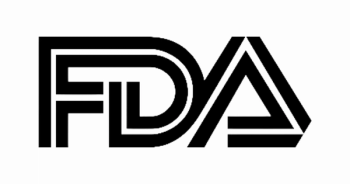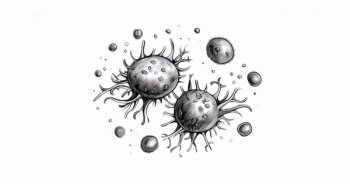
Cancer Research at Risk as NIH Faces Funding Freeze and Cuts
Gwen Nichols, MD, discussed the potential implications of recent funding cuts, how they are affecting academic and community oncologists, and what may be done to mitigate the damage.
Cuts in federal funding for cancer research and treatment have created a new obstacle that could have an impact on the medical community. Among the institutions most affected are the National Institutes of Health (NIH) and the research centers that depend on its grants.1
According to Gwen Nichols, MD, these reductions to funding may potentially impact community and academic centers, slow down clinical trials, and raise concerns about the future of cancer innovation and the development of treatments.
In particular, Nichols, who has a front-row seat to the impact of these cuts as the executive vice president and chief medical officer of the Leukemia and Lymphoma Society, is worried about young investigators who rely on NIH grants to establish their careers and advance the next generation of innovation in cancer research. Without appropriate funding, promising research could be delayed, and Nichols emphasized that future researchers may be discouraged from entering the field altogether.
“The rapid implementation of these cuts has been particularly challenging. Those already on the margins—early-career investigators and mid-career researchers trying to establish themselves—are the most vulnerable. My concern is not just for the immediate future but for the long-term sustainability of academic research over the next 5 to 10 years,” explained Nichols in an interview with Targeted OncologyTM.
In the interview, Nichols, discussed the potential implications of these funding cuts, how they are affecting academic and community oncologists, and what may be done to mitigate the damage.
Targeted Oncology: In the wake of these funding cuts that went into effect, can you provide some background?
As part of the process of evaluating potential budget cuts within the federal government, one of the areas impacted was the National Institutes of Health (NIH) and research funding. Initially, there was a funding freeze, which had significant consequences.
The freeze affected community health centers funded by the NIH, forcing some to temporarily close their doors and stop seeing patients until funding was restored. These were unintended consequences of a rapidly implemented policy. This isn’t about the Leukemia & Lymphoma Society (LLS) taking a stance on the policy itself, but rather about how quickly these changes occurred, without sufficient time to adjust and find alternative solutions.
Once the freeze was lifted, another significant impact emerged—cuts to what are called indirect costs. Every organization, including businesses, seeks to reduce overhead, and it is appropriate to assess these expenses. However, the issue was not the assessment itself, but rather the rapid, across-the-board nature of the cuts, which left little time for adjustment.
For community doctors, the impact may not be as direct, except for those affiliated with NIH-funded community health centers. However, large academic health centers, which rely heavily on indirect costs to maintain operations, are struggling to adapt. These funds cover essential infrastructure expenses, such as keeping the lights on, maintaining facilities, and ensuring that research can continue.
From LLS’s perspective, our primary concern is how these cuts affect researchers, particularly young investigators. LLS does not receive federal funding, so our concern is not about our bottom line but rather about the research community we support. Young researchers may now question whether they should enter this field at all, while those in the early stages of their independent careers rely heavily on federal grants to advance and sustain their work.
While it is important to scrutinize spending and reduce waste, there is a misconception that indirect costs simply accumulate in a general fund. In reality, these funds support critical research infrastructure, including servicing equipment, removing biohazard waste, and covering other essential operational expenses that cannot be itemized in grant proposals but are necessary for research to continue.
The rapid implementation of these cuts has been particularly challenging. Those already on the margins—early-career investigators and mid-career researchers trying to establish themselves—are the most vulnerable. My concern is not just for the immediate future but for the long-term sustainability of academic research over the next 5 to 10 years.
How do you think these NIH funding cuts will affect ongoing cancer research? Are you concerned about potential delays in innovation?
We are actively gathering data to assess the real impact of these cuts. It’s easy to react emotionally, but we need to be thoughtful and identify the actual consequences. One major concern is how these cuts may affect clinical trials.
Indirect costs cover salaries, research support, data management, regulatory compliance (eg, IRB submissions), and maintaining essential infrastructure for clinical trials. If institutions can’t cover these costs, clinical trial operations may be disrupted. We are already seeing hiring freezes in hospitals and research institutions, limiting the ability to bring in new lab personnel. This uncertainty may drive researchers away from academia toward industry positions in pharmaceutical companies. While the pharmaceutical sector is valuable, we cannot afford to lose all our academic scientists, as they are essential for conducting foundational research.
Senior researchers with substantial independent funding will likely be fine, but early- and mid-career investigators who depend on these grants to secure tenure, hire staff, and establish their labs are at risk. This could significantly slow down scientific progress.
At a time of uncertainty, we need to encourage investment in private-sector and nonprofit research funding to help bridge the gap. While private funding cannot fully replace NIH’s multibillion-dollar support, we must do everything possible to sustain research efforts until a better funding balance is restored.
Are there specific research initiatives or clinical trials at risk due to these cuts? What does this mean for patients seeking experimental therapies?
It is too early to provide a definitive answer, but we are closely monitoring the situation. Our team includes 11 clinical trial navigators—nurses who provide free support to blood cancer patients, their families, and their doctors. Through direct conversations with investigators, they will track whether trials are put on hold or if enrollment slows.
Over the coming months, we will collect real-time data to better understand and present these findings to legislators. While there is not an immediate crisis for patients yet, my concern is the ripple effect these cuts will have over time.
REFERENCES:
Revealed: NIH research grants still frozen despite lawsuits challenging Trump order. News release. Nature. February 20, 2025. Accessed February 20, 2025.
https://tinyurl.com/wd288yph FAQS: proposed federal spending cuts and blood cancer research and care. News release. The Leukemia & Lymphoma Society. February 19, 2025. Accessed February 20, 2025. https://tinyurl.com/3sesftr9








































